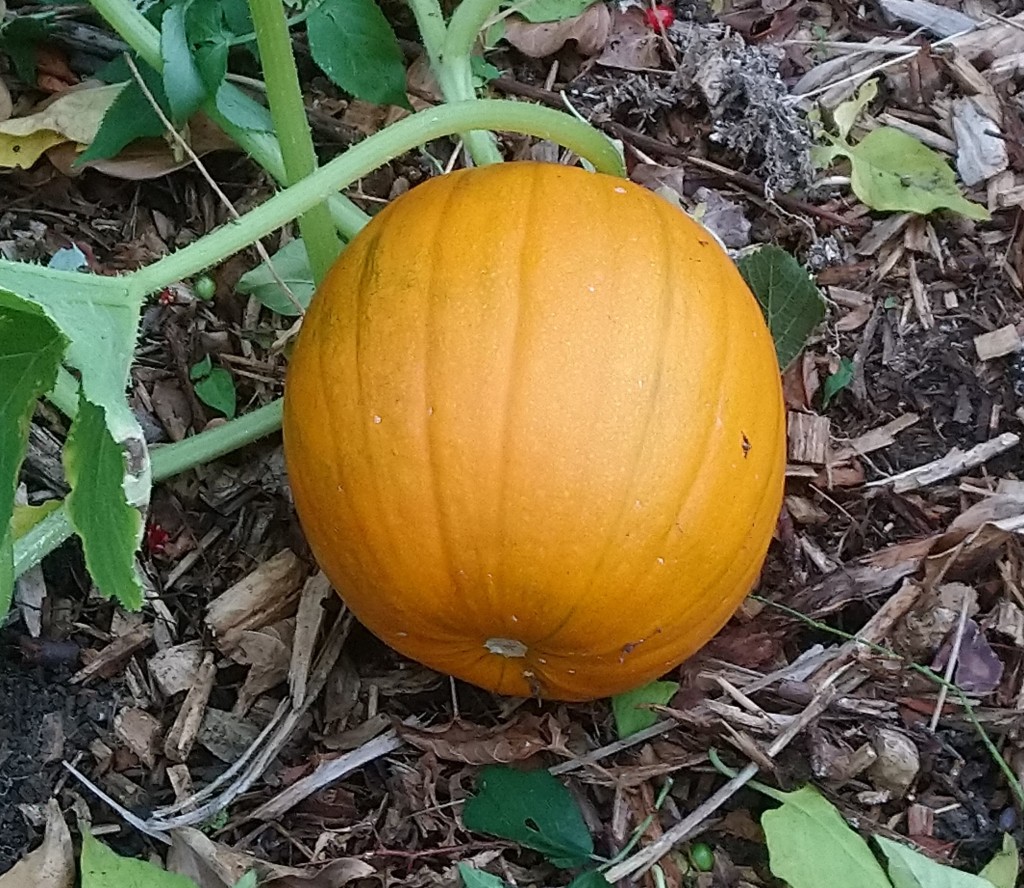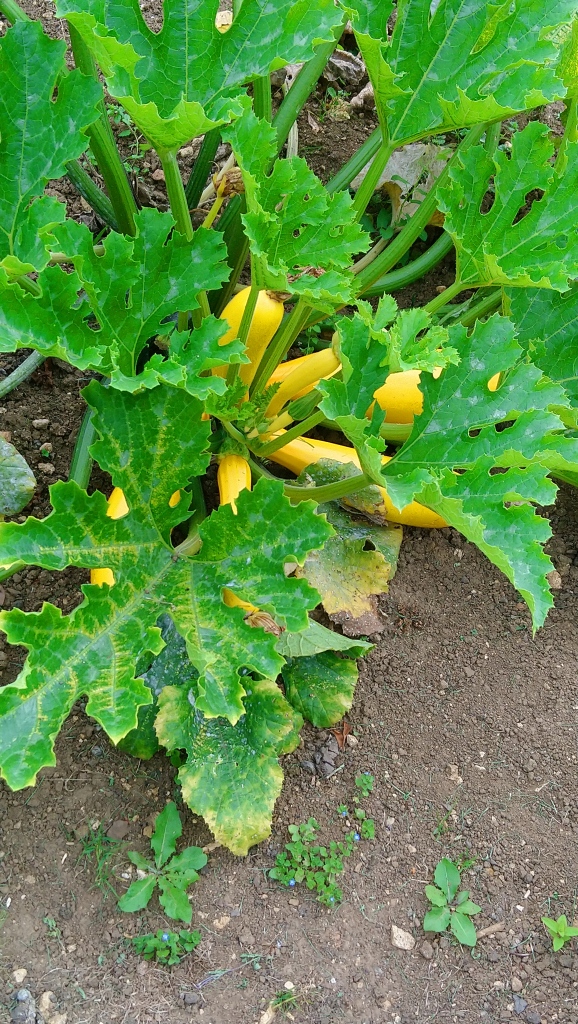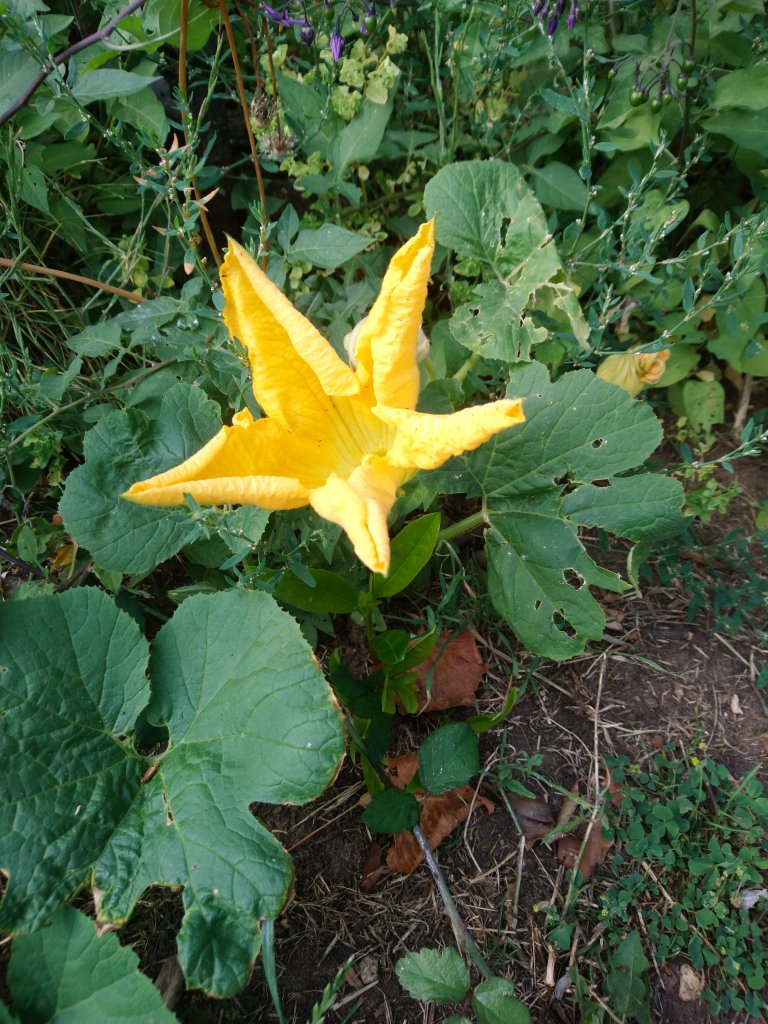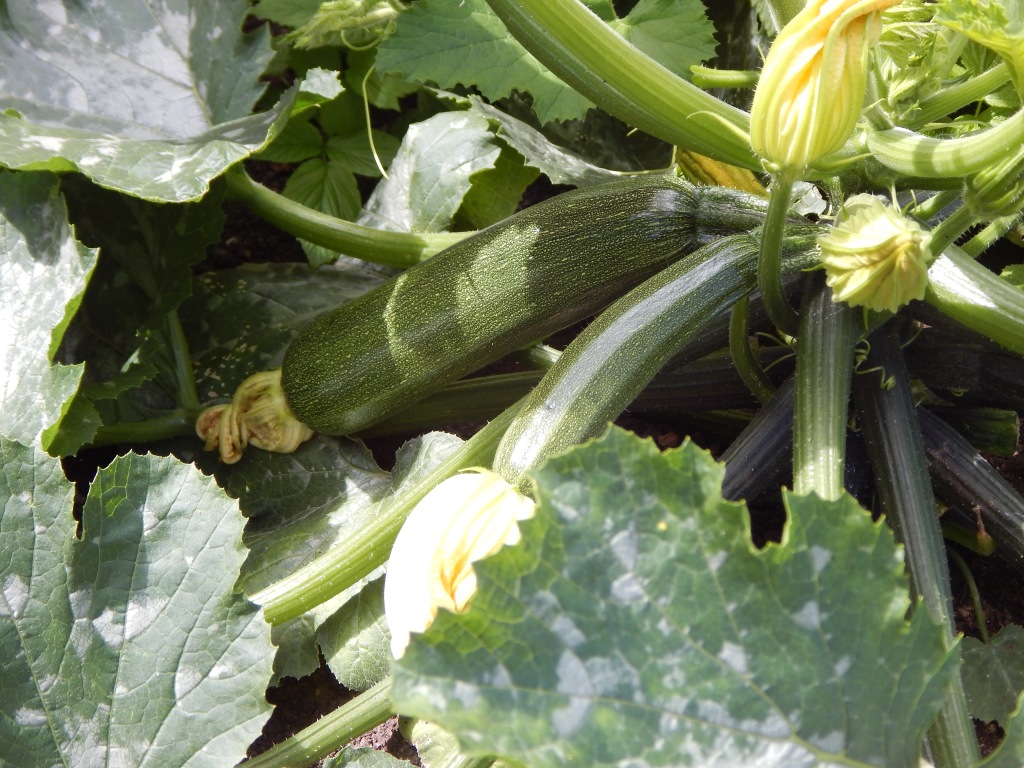
[105] Cucurbita pepo, Courgette
Introduction
Cucurbita pepo has been cultivated widely for thousands of years and has many varieties with edible fruits of different shapes, sizes and colours.
It can be a winter squash such as pumpkin, or a summer squash such as courgette (zucchini) or marrow. Names of varieties are different in the UK and the USA.
(In Britain even the word squash is relatively new. Winter squash varieties have a hardened outer shell that is not eaten. Summer squash, often harvested earlier, are eaten entirely.)
Taxonomy
Kingdom – Plants
Division – Vascular Plants
Class – Angiosperms (Flowering Plants)
Order – Cucurbitales (Gourds)
Family – Cucurbitaceae (Gourds including cucumber, melon, watermelon.)
Genus – Cucurbita (Squash)
Scientific Name – Cucurbita pepo
There are many cultivated varieties. Wikipedia lists fourteen distinct types but only the pumpkin and marrow (and courgette) are seen generally in Britain.
The taxonomic status of Cucurbita pepo is disputed and it may have arisen by hybridization from two or three of the other crop species of Cucurbita.
Name
Originally in Britain we had just the marrow. The word comes from bone marrow as both were scooped out from their containers. Before the introduction of Cucurbita from America, the word marrow was used for exotic African gourds such as the calabash.
The terms for the smaller versions date from the early Twentieth Century. Courgette comes from the French, a diminutive of ‘courge,’ meaning marrow. Zucchini comes from a diminutive of the Italian ‘zucca,’ meaning pumpkin, marrow or squash. Italians dispute whether it should be masculine zucchino (plural zucchini) or feminine zucchina (plural zucchine.) Americans use the masculine plural as if singular. In South Africa they call them baby marrows!
Cucurbita is Latin for a gourd. Pepo is Latinized Greek for pumpkin or melon.
Description
The courgette plant may be recognized from its large, shaped leaves – but different varieties are different.


Each plant has both male and female flowers, which are large and yellow.

Some varieties develop the elongated green courgette fruits that will become marrows if allowed to grow larger.


Different varieties produce the large round orange pumpkin.

Habitat and use
Cucurbita pepo has been widely cultivated through the Americas for about ten thousand years and has several distinct varieties of uncertain origin.
In Britain we have had pumpkins (large, orange and round) and marrow (large, green and elongated) and courgettes (immature small marrows) are now common. Many other varieties of squash have come to us from America – most of these are from other Cucurbita species.
Other Notes
In general, you will find these in allotments and vegetable gardens. In modern times, vegetable plots in front gardens are becoming more common.
You never know where you may find plants. In a local ornamental garden, an overgrown area of weeds was cleared fairly recently and the pumpkin shown in my pictures emerged from beneath.
See also
You will, of course, see other fruit and vegetables grown in gardens. Don’t worry about the words. Courgettes and pumpkins are fruits that are generally treated as vegetables in cookery.
